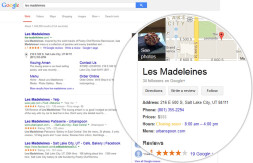Effective Email List Segmentation Tactics

As an online merchant, you probably already know that when it comes to email marketing, segmentation is extremely important and its importance continues to grow due to the increased volume of emails being sent to your inbox. Response rates continue to decline each year and consumers are becoming more dis-engaged due to lack of relevancy. Segmentation is a great way to increase the relevancy and engagement of your email marketing campaigns. To implement an effective segmentation strategy, it’s not about having the most sophisticated data integration – it’s about knowing where to focus your efforts. Here are 4 types of data to focus on and effective tactics to leverage that data:
1. Email Interaction – All of the data associated with the user’s behavior with the email
What did they open? When did they open? What did they click on? Did they buy or not?
Email interaction data is readily available and highly effective.
- Progressive Profiling – Ask recipients simple survey questions to drive engagement, improve conversion, and inform personalization for future campaigns.
- Engagement-based segmentation – Identify high-risk segments based on engagement (not opened or clicked in over a year). Reduce frequency of emails to these less engaged customers, and increase frequency to high-value customers with personalized content.
2. Cart Abandonment – All of the data associated with the user’s shopping cart before they abandoned
Did they abandon products in their cart? What products?
Cart Abandonment data shows what the user is “in-the-market” for now, and is the best data source for determining purchase intent.
- Abandoned-cart targeting – Identify the users that have begun shopping in your online store but have not completed their purchase and create personalized remarketing emails based on the products they abandoned. Often a simple reminder is enough to entice a distracted shopper to return and complete their purchase.
3. Purchase Behavior– All of the transactional data associated with customers’ orders
What products did they buy? When was their last purchase? What categories did they purchase products from?
Recent purchase activity is effective for using in a predictive manner and to determine cross-sell opportunities.
- Transactional-based targeting – Utilize transactional information to determine cross-sell opportunities and product preferences. Include “You might also like” related product info in emails for consistent personalization.
- Customer-value targeting – Prioritize your high and low value customers. Focus on getting high value customers to spend more by sending higher-priced items, and make them feel special with exclusive “VIP” offers.
4. Profile – All of the demographic data
What is their Age/birthdate? What is their gender? Geographic Location? What are their preferences?
- Profile-based targeting – Using the same offer for all recipients, create different email variations based on demographic data (Age, Gender, Location, Preference) and customize each variation with relevant copy and images.
- Solution-based targeting – Use surveys to understand customer issues/needs and leverage this data to personalize content based on the customers’ needs.
This data is readily available and will drive the most improvement to your email marketing campaigns. So what are you waiting for? Start segmenting now to increase the relevancy and engagement of your emails!














